Ooty (Udhagamandalam), Tamil Nadu
For many, it is known as the ‘Queen of Hill Stations,’ this beautiful gem is situated in the Nilgiri Hills. At an altitude of 2,240 meters (7,350 feet) above the sea level, it is a beautiful hill station which has been popular since the times of British rule.
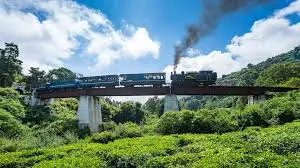
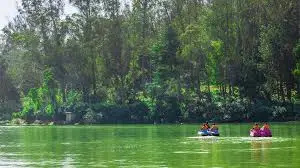
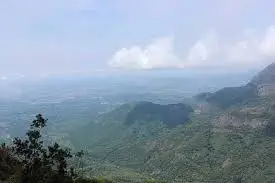

Key Attractions
- Nilgiri Mountain Railway: This toy train is said to be a UNESCO World Heritage Site that will provide a scenic ride through the mountains.
- Ooty Lake: An artificial basin of water which has facilities which include boat riding, and an aseptic area for having snacks and lunch.
- Botanical Gardens: It occupies an area of up to 833 sq. km and boasts of over 1,000 plant species and even one of the oldest tree fossils, a 20-million-year-old tree.
- Doddabetta Peak: Tourist place situated at the highest peak in the Nilgiris from where one can have an excellent view of the hills.
- Tea Gardens: Plantation houses where you can have a first-hand glimpse of how tea is processed, and taste the different products.
Best Time to Visit: There are favorable months for traveling and those that are a bit unfavorable, the favorable periods are from March to June and from September to November.
The weather pattern in Ooty is quite favorable and the beauty of the natural environment put the town among the best natural holiday destinations. The town was colonized and it has colonial features such as the st stephen church and the stone house among others. Tourists also have an opportunity to go trekking, mountain biking or horse riding in the nearby hills.
Kodaikanal, Tamil Nadu


Key Attractions
- Kodaikanal Lake: Perfect for boating and nice walks in the town center.
- Coaker’s Walk: A kilometer long trail that gives a vantage view of the plains.
- Bryant Park: An excellently maintained botanical garden along with annual flower show facilities.
- Pillar Rocks: Three colossal stone monoliths that are 122 meters in height.
- Dolphin’s Nose: An horizontal surface of rock jutting out over a cliff, from which a clinch of the country can be obtained.
Best Time to Visit: April June inclusive and September October exclusive.
Munnar, Kerala

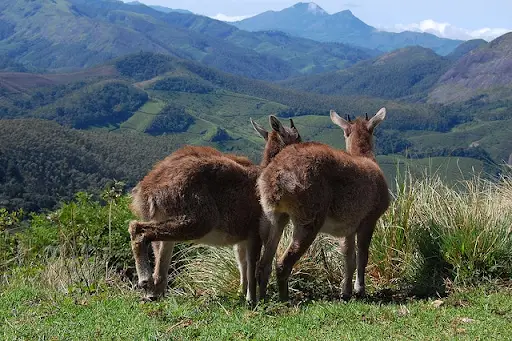
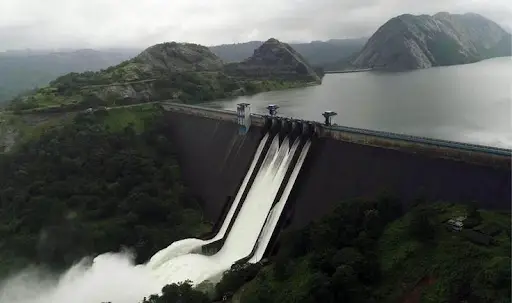
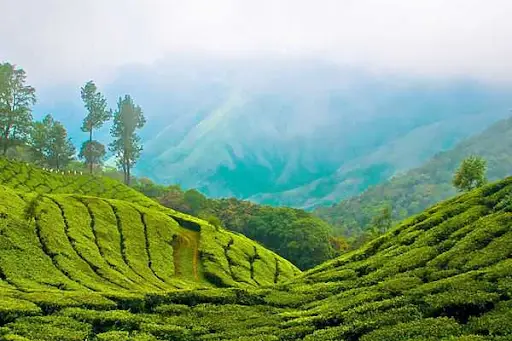
Key attractions:
- Tea Plantations: Large plantations from where one can learn on how the tea is grown and processed.
- Eravikulam National Park: A habitat for the local extinct Nilgiri Tahr species and the Neelakurinji flower species.
- Mattupetty Dam: Volkvoed, a place for a boat ride and a bit of scenic beauty viewing.
- Top Station: The hill top view at Munnar – having the bird’s eye view of the vast expanse of the Western Ghats.
- Tea Museum: Presenting the historical features and journey of tea making within the area.
Best Time to Visit: Mid September ending of May
The scenery you find in Munnar will make any photographer drool; tea estates that are an emerald green, valleys that are veiled in mist and wildlife that is out of this world. It also has spice plantations where tourists can familiarize themselves with the agricultural processes of cardamom, cinnamon, and peppers. Of the nature activities adventure lovers can participate in paragliding, rock climbing, trekking amongst others.
Coorg (Kodagu), Karnataka
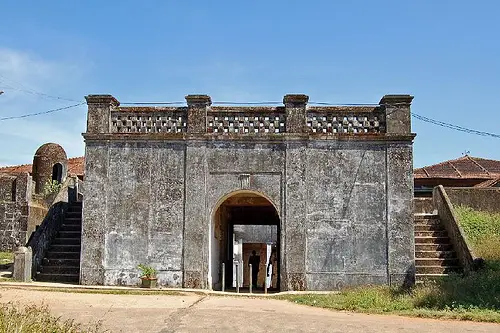

Key attractions:
- Abbey Falls: A beautiful waterfall which is formed by the intentional drop of water through rocks on the face of steep terrain surrounded by/or containing coffee farms.
- Talacauvery: Being an important pilgrim center, Cauvery’s birthplace is also a famous tourist spot.
- Nagarhole National Park: Resident with several other species of wild animals such as elephants, tigers and leopards.
- Raja’s Seat: An annual garden and outlook with a beautiful view of the setting sun.
- Madikeri Fort: A 17th century palace now a museum.
Best Time to Visit: (October to March).
Coffee is Coorg’s finest product, several estates in this region offer tour and tasting services. The area boasts of Kodava cuisine which is quite different from the regular Indian food and includes pork preparations and bamboo shoot based curries. Coorg is also well-known for honey, spices and country-made wines. The Action and Adventure tourism includes white water rafting in Barapole river and trekking to tadiandamol peak.
Wayanad, Kerala




Key Attractions:
- Rock paintings that can be dated back as early as 6000 BC found in archeological sites such as rock shelters.
- Banasura Sagar Dam: Boating and nice views on this largest earthen dam in India.
- Wayanad Wildlife Sanctuary: It is one of the regions inhabited by such animals as elephants and tigers as well as having a rich variety of vegetation.
- Chembra Peak: The highest point in the district which is known for the heart shaped lake.
- Pookode Lake: A freshwater lake with its clampings of evergreen trees and mountains.
Best Time to Visit: (October to May)
A thing of beauty, and an ideal place for tourists who have interest in wildlife and natural beauty, Wayanad has varied and splendid bio geographical features. The area also has connections with tribal centers where one can visit tribal villages to have a feel of the tribal way of life. Bamboo rafting, zip fly, zip line, night camping are some of the adventure activities which are much famed by the tourists.
Coonoor, Tamil Nadu


Key attractions:
- Sim’s Park: A well-cared botanical garden with over one thousand plant species and samples of artistic and sculptural production.
- Dolphin’s Nose Viewpoint: With facilities such as offering panoramic views of the Nilgiri Hills and Catherine Falls.
- Lamb’s Rock: A viewpoint with marvelous views of the plains and tea estates.
Hidden Valley: A beautiful natural slot unseen by man and ideal for hiking. - Tea Factories: Several estates have activities that include tours and tasting of the well known Nilgiri tea
Best Time to Visit: Autumn to winter
Coonoor is the perfect place of visit if you want to have a silent vacation without much hullabaloo. There are numerous colonial bungalows in the town, many of which have been turned into heritage hotels to give a peep into the past. Ecotourism, which includes bird watching as well as animal watching since the area is endowed with a lot of endemic and migratory birds and animals respectively. Coonoor hosts an annual fruit exhibition called the Coonoor Fruit Show usually held in the month of May.
Yercaud, Tamil Nadu
A popular hill station situated in the southern state of Tamil Nadu in the Shevaroy Hills also referred to as the Jewel of the South. Situated at an elevation of 1,515 meter it is famous for the orange orchards, coffee estates and the quietness.

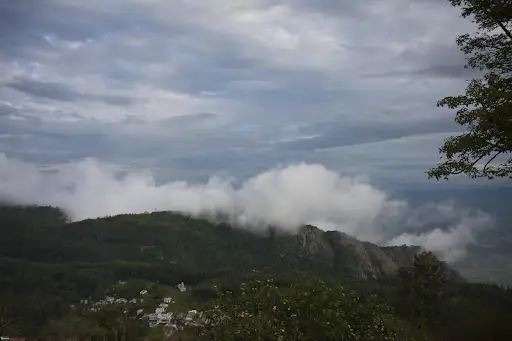
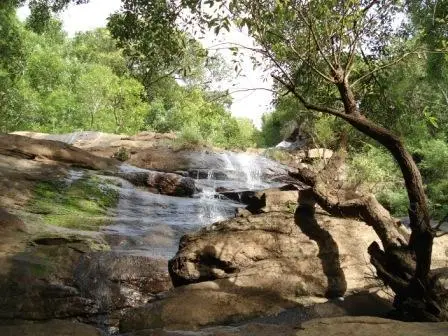
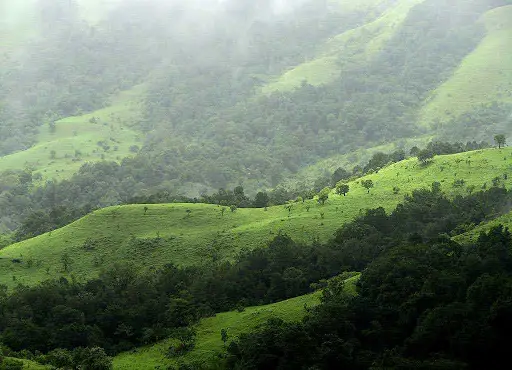
Key attractions:
- Yercaud Lake: It is a huge production and the focal point of the town suitable for boarding and picnicking.
- Pagoda Point: Panoramic view of the Eastern Ghats and city of Salem would be available for the grizzlies.
- Lady’s Seat: A viewpoint with a telescope facility in order to view the surrounding environment.
- Killiyur Falls: A high vertical waterfall of 90 meters in height falling through thickets of trees.
Botanical Garden: Boasts of several plant species and a deer park within its precincts.
Best Time to Visit: Other semesters include October to June
Being one of the least explored hill stations of South India, it can rightly be called as a perfect quiet destination for tourists. This town is known for its growth of arabica coffee, spices and fruits. There are many paths that trekkers can take in the nearby forests for several hikes. The Summer Festival held in May, is the event in which different customs of the region and the agricultural products of the area are presented.
Chikmagalur, Karnataka


Key attractions:
- Mullayanagiri Peak: This place is declared as the highest peak in Karnataka which gives great beauty of the place to capture.
- Baba Budangiri: pilgrimage center and the abode of coffee plantations in India.
- Hebbe Falls: Located in a thick buffer zone with plants and coffee trees, a splendid waterfall.
- Bhadra Wildlife Sanctuary: Inhabited by various kinds of animals such as tiger, leopard and elephant.
- Kemmangundi: This is a stunning ,natural beauty and popular hill station famous for its magnificent gardens and sunset in particular.
Best Time to Visit:All summer schools are from September to May.
Special attractions: For any coffee or tea loving tourist, Chikmagalur is a place that boasts of several coffee estates where tourists can take tours to and take tastings. Trekking and camping as well as wildlife raids can also be done by tourists. The region is also blessed with several temples and ruins of the old kingdoms and dynasties, and the famous Hoysala temples at Belur and Halebid. The Kadur Fest is held annually in December and it features the regional culture and customs.
.
Ponmudi, Kerala
Ponmudi which translates as ‘Golden Peak’ is a comparatively offbeat hill station located in Trivandrum district of Kerala. Situated at a height of 1100 m above sea level with tea gardens, tall mountains and a shroud of mist most of the time, it is a bio-diverse trekking destination.


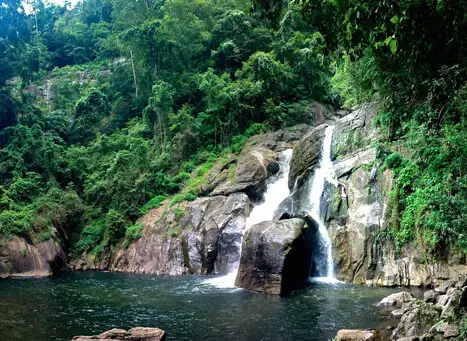

Key attractions:
- Golden Valley: A tourist attraction especially for the provision of a vantage view of surrounding formations.
- Peppara Wildlife Sanctuary: It is also the natural abode of many kinds of animals and birds.
- Meenmutty Falls: A system of waterfalls comprising three tiers overhung by forests.
- Agasthyarkoodam Peak: Second highest peak in Kerala, favored by trekkers.
- Kallar River: Perfect solution for a picnic and to contemplate the exquisite landscapes of the area.
Best Time to Visit: November to May
Ponmudi has not yet been greatly developed and hence provides quite a natural scenery which is ideal for the nature lovers and those who would want to get a little bit secluded. The steep access road to Ponmudi with hairpin bends is a challenge though it is tortuous but affords visitors with beautiful vistas. Hiking and particularly MTB are popular around the hills and in the valleys close to the town. The Jatayupara Earth Centre with its huge bird sculpture and other activities such as zipline and abseil is also not far off.
Araku Valley, Andhra Pradesh

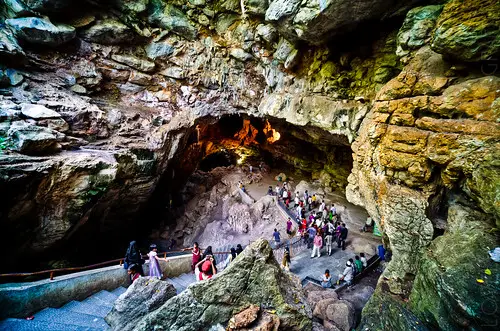
Key attractions:
- Borra Caves: The largest kind of cave in India very popular for its exciting formation of stalactites and stalagmites.
- Tribal Museum: Featuring the customs of the aboriginal peoples inhabiting the area.
- Chaparai Waterfalls: The waterfalls are a sequence of small cascades that is ideal for barbeque.
- Padmapuram Gardens: A well laid garden with a variety of plants and flowers with ornamental and horticultural features.
- Ananthagiri Hills: Featuring breathtaking views of the adjacent tea and coffee farms and the forests.
Best Time to Visit: It is preferred throughout the one year season beginning from October to March.
Araku valley is infamous for organic coffee which is produced through the tribal people of the area. A stroll at the Coffee Museum will inform visitors on the cultivation and processing of the coffee beans. The Bagata and Valmiki tribes engage in a presentation of the Dhimsa dance which is a cultural experience. Visakhapatnam to Araku valley by train is a joy ride with an excellent view of the Eastern ghats .
Tips for Hill Station Travel in Southern India
- Weather Preparedness: Hill stations may be cooler sometimes than the plains from the perspective of temperature. Take warm clothes especially during the night and early in the morning.
- Monsoon Caution: Monsoon season generally lasts from June to September and many of the hill stations are blessed with high amounts of rain during this period. Governmental websites should be checked for the weather forecasts and condition of the roads before traveling.
- Eco-friendly Practices: Such ecosystems are in fact very delicate in the sense they can be easily affected by environmental factors. It recommended that all tourists should avoid using plastics and should not litter in order to promote responsible tourism.
- Respect Local Cultures: Most hill stations have their own cultural activities. Show cultural sensitivity by being sensitive to dressing in the correct way; especially when visiting places of worship.
- Wildlife Safety: When in the wildlife areas, remember to stick to the rules and regulations laid down in the park. Keep a certain distance from the animals and do avoid offering them food or any kind of feed.
- Altitude Acclimatization: Some of the visitors may develop illnesses such as altitude sickness. The first day is always critical so do not overexert yourself and ensure you are taking lots of water.
- Transportation: Most of the hill stations are easily reachable by car, but some of them give joy of having toy trains or cable car rides. One should conduct a research and book for the hotels in advance if the situation calls for it.
- Accommodation: Hill stations provide different types of accommodations, from five star hotels to the bungalow stay. Always book early, more so during the busy season.
- Local Experiences: Interact with locals, taste local food, and interact with people in cultural experiences to make the trip more memorable.
- Photography: Should carry gear for foggy and dull illumination which is often found in hill stations.
Southern India’s hill stations are as varied as they can get from the British flavor of Ooty to the coffee country of Coorg, from the tea country of Munnar to the tribal land of Araku Valley. All the locations are also distinct from each other because of geographical location, climatic conditions, and cultural backgrounds of the people staying or visiting there.
These higher dwellings offer not only the refuge from burning lowlands, but also the way to get in touch with nature, discover the diverse and dense biotope, and embrace the indigenous folks of highlands. For the adventure seekers, the relaxing place, the cultural site, every traveler who plans to visit the hill stations of Southern India has a lot to look forward to.
This being the case, always be wise when choosing a route through these hilly and forested regions and valleys, and always do so sustainably. These sensitive environmental complexes and isolated people’s identities require our support to remain a source of wonder and inspiration for future tourists.
Thus, starting from the rolling tea gardens to the mountainous regions and from the buildings of the British period to the tribes of the aboriginals, the hill stations of Southern India are a different world altogether. Not only are they a way to escape the mundane and get away but they are a chance to view India in a way that is cooler, greener and, infused with the alchemy of the hills.
Therefore, carry your baggage, take your spirit of traveling, and get ready to be enchanted by the serene beauty of the southern part of India’s hill stations. Whether you are having your cup of fresh tea at Munnal, hiking through the woods of Coorg or watching the dawn till dusk spectacle at a vantage point in Kodaikanal you are sure to start making memories for life.



0 Comment